#1911 jack is my favorite jack
Text
I NEED MORE LOVE FOR 1907 AND 1911 JACK. ALL I EVER SEE IS 1899 AND 1914 GIVE. GIVE THE LITTLE SILLY (PRE)TEEN SOME ATTENTION!!!!!!!!!!
#please#1911 jack is my favorite jack#i love all jacks but let me see more of THAT one#do you know how hard it is to find an icon of 16 year old jack... TOO HARD#TOO. HARD.#cause all thatll show up is 1914 and 1899 jack#mainly 1914 jack but i see 1899 a lot too#okay well lets be real after some scrolling john just shows up#give jack more attention in general#rdr2#red dead redemption 2#red dead redemption#red dead#jack marston#jack rdr2#jack rdr#rdr2 jack#rdr jack
32 notes
·
View notes
Note
your opinion on abigail ?
First impression: it pains me but i'm gonna be honest i didn't understand her motivations in my first playthrough and i didn't like her until I restarted the game. oh how fucking wrong i was
Impression now: she's my everything just thinking about her makes me tear up. she finds so much joy in simple things. she just wants to have some stability in her life. she wants better for her son than what she had growing up
Favorite moment: like every second shes on screen, but one moment that always sticks out in my mind is in the epilogue when she's leaving their cabin to go to her new job and she's so giddy about it like...... Abigail........ "I was always a good thief" makes me cry inevitably every single time also
Idea for a story: would love to see more of her being a thief and outlaw in any regard. clearly she hasn't had time to get out since having Jack but I love that Hosea takes her with him for the bank job specifically. uh there's also a cut mission with Abigail and Hosea and I would love to hear what the hell they're saying
Unpopular opinion: I guess some people don't like her and my advice is get well soon
Favorite relationship: I'm sorry but it's her relationship with Dutch and Hosea. Dutch and Abigail are such stereotypical mother-in-law and daughter-in-law it's kind of both hilarious and concerning. they're a little cold towards each other but there is some clear familial bond there, and their contrasts take on such interesting shades because of that sentiment. they do care for each other (a scene that gets to me is when they pat each other on the arm after cielito lindo during Jack's party) but their priorities are so wildly different, they could never get along. and the way they become so hateful and bitter towards each other in the end..... good lord. As for Abigail and Hosea I've mentioned it before but it's so heartbreaking the bond that they have, Hosea would do anything for Abigail and Abigail truly relies on him. I think Hosea was the closest support Abigail had through her motherhood, not just emotionally but also practically: Hosea is raising Jack alongside her like any grandparent would. I think the same applies to Dutch when it comes to raising Jack it's just that Dutch and Abigail don't really get along LMAO
wip time! 1911 Abigail:

28 notes
·
View notes
Photo

Today is World Photography Day, and I think of how I have been inspired by my Uncle Jack. The son of a Welsh coal miner who brought his family to America in 1911, Jack Wilkes was hired by LIFE magazine and sent to China during World War Two. My childhood bedroom had Peter Pan characters on one wall and an 11x14 silver print above my bed of a Chinese soldier eating a bowl of rice. My grandmother’s favorite brother, my Uncle Jack died when I was nine, and I believe my grandmother encouraged my photography to compensate in a small way, the loss of her brother. So many great photographers have helped me see the people of the world with heart and eyes open; I’m grateful it began with the image of a man eating a simple meal, on the other side of the Earth. Family History 🇺🇦💔🌎💔🌏💔🌍💔🇺🇦 #earth #china #uncle #jackwilkes @life #magazine #photographer #ww2 #rolleiflex #mediumformat #bnw #film #blancetnoir #黑白 #heiyubai #blancoynegro #siyahbeyaz #shirokuro #blackandwhite #filmisnotdead #istillshootfilm #pdx #portland #nw #northwest #leftcoast #oregon #family #legacy #hasselblad #worldphotographyday @worldphotographyday Rolleiflex 3.5 Tessar Hasselblad 500c 120 Makro-Planar https://www.instagram.com/p/ChcxQkwpHkh/?igshid=NGJjMDIxMWI=
#earth#china#uncle#jackwilkes#magazine#photographer#ww2#rolleiflex#mediumformat#bnw#film#blancetnoir#黑白#heiyubai#blancoynegro#siyahbeyaz#shirokuro#blackandwhite#filmisnotdead#istillshootfilm#pdx#portland#nw#northwest#leftcoast#oregon#family#legacy#hasselblad#worldphotographyday
3 notes
·
View notes
Text
Literary Tour of NorCal (Part II): Jack London
I roadtripped through Northern California in December 2023 to learn more about some of my favorite authors, including John Steinbeck, Jack London, John Muir, and Jack Kerouac.
Day two of my literary tour consisted of a drive up to Sonoma County, specifically to Jack London State Historic Park, where Jack London and his wife Charmian lived from 1905 until London's death in 1916, and where Charmian continued to live until her death in 1955. The estate is extremely well preserved, a far cry from the commercialism of Cannery Row. The kiosk attendant suggested that I start my tour with the House of Happy Walls Museum. The museum was established by London's wife Charmian in the wake of his death, in order to educate visitors on his life and books. The Museum is curated nicely, and includes a peek into Charmian's upstairs living quarters, where she lived for some time after London's death. In the museum shop, I met Raleigh. Raleigh has been living in Glen Ellen, where the State Park sits, since the early 60s. He even told stories about working as a grounds keeper for Albert Kahn, a contemporary of Steinbeck's and fellow socialist. He met Kahn, who was famous for his pro-union reporting when Kahn picked him up hitchhiking. As groundskeeper, he also met some of Kahn's famous friends, like neighbor Hunter Thompson.

A trail map greets visitors from the parking lot. From here, visitors can travel to the House of Happy Walls, Jack London's grave, and the ruins of Jack London's former mansion.

A placard outside the House of Happy Walls which was built by London's widow to house his works.



Views from the House of Happy Walls were spectacular.
After visiting the museum, I decided to head down to London's grave and the ruins of his Wolf House. London began building the Wolf House in 1911 but a fire destroyed and halted construction in 1913. I was hoping to see the ruins, but because I was alone on the trail save for a mustachioed man in a football jersey and a kettle of approximately nine vultures flying overhead, I decided to turn back before becoming a ruin myself.

Jack London requested that his ashes lie next to those of the children of an Irish immigrant who lived on the land before he and Charmian moved in.

I counted more than nine vultures as I approached the ruins of the Wolf House, and so I decided to turn back before seeing them for myself. Fun fact, a group of vultures is called a "committee", "venue" or "volt". When flying, a "kettle". When feeding on a carcass, a "wake".

The land on which London's Beauty Ranch sits is, well, beautiful.
A short walk from the House of Happy Walls sits the cottage where London and his wife spent most of their days after the Wolf House burned down. The cottage is modest, but the views are expansive and magnificent. Within the cottage are portraits and artifacts from the London couple's travels. The land surrounding the cottage demonstrates London's commitment to sustainable agriculture, an obsession picked up from his visits to Asia and which occupied him when he wasn't writing or traveling.
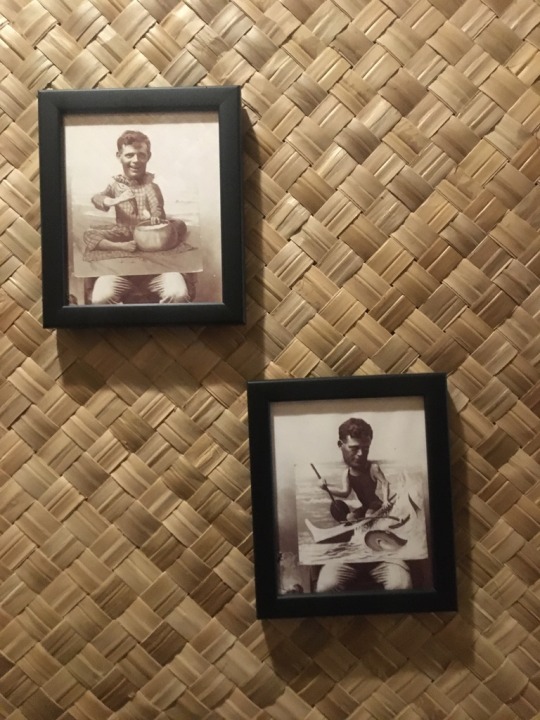
Jack London's cheeky photographs hang in the hallway to his office.

Jack London's office.

Jack London often slept in a bedroom next to the office so as not to disturb visitors when he worked late at night.

The land abutting Jack London's cottage is now a privately owned vineyard.
0 notes
Text
Sesshomaru||NSFW Alphabet


A/N: That’s right, I wrote an NSFW alphabet for him as well. How could I not, he’s a hottie. Also somehow, I managed to keep this w a gender neutral reader, so all my Sesshomaru fans may enjoy (unless u ship s*ssrin, then leave)
Word Count: 1911
Warnings: Obviously nsfw

A - Aftercare (What they’re like after sex)
After sex, Sesshomaru returns to his initial composure almost immediately. Like he’ll pant for a few seconds, wipe his dick off and then immediately, boom, like nothing ever happened. Of course, you, are thoroughly wrecked, needing Sesshomaru’s help, help which he is more than happy to give.
B - Body part (Their favourite body part of theirs and also their partner’s)
His favorite body part on himself has to be his arm/arms (depending). He loves his arms for a reason completely separate from you, he just enjoys the fact that he finally has two arms, like he thinks back to all the times he didn’t properly appreciate his left arm, and vows to never make that same mistake.
C - Cum (Anything to do with cum basically… I’m a disgusting person)
As much as he loves cumming on your body, nothing compares to the feeling of cumming inside you. He loves to watch you slowly lose all coherency as he just fucks you full of his cum. If you let this man cum inside you, you will unleash a whole new beast, that you’re gonna have to be prepared to deal with.
D - Dirty Secret (Pretty self explanatory, a dirty secret of theirs)
Sometimes, when Sesshomaru knows he’s going to be away from you for a long time, he tries to fuck you as much as possible. He knows that he’ll miss you and gets a little more lovey dovey, but above all, he’s trying to remember the feeling of you so he can better mimic it with his had.
E - Experience (How experienced are they? Do they know what they’re doing?)
Sesshomaru is extremely experienced, on account of both his rank and his power. Demons are attracted to power and rank and, being so noble, Sesshomaru has never had any trouble with finding a partner to warm his bed. He’s not versed in everything but he has a strong sense of intuition and a deep connection with his own desires.
F - Favourite Position (This goes without saying. Will probably include a visual)
A bit cliché, but, his favorites are doggy style and mating press. Any position where he has the leverage to press you down and fuck into you also ranks pretty high on his list.
G - Goofy (Are they more serious in the moment, or are they humorous, etc)
Sesshomaru is so serious in the moment. He gets so laser focused on pleasing you that he finds any distractions to be a bit...grating. That being said, you’re the exception, if he happens to make you laugh during sex, he’ll just roll his eyes affectionately before shutting you up with a kiss.
H - Hair (How well groomed are they, does the carpet match the drapes, etc.)
He’s about as well groomed as any man of his station at the time would be. He’s not exactly shaving down there but his hair is so fine that it isn’t unbearable. Also the carpet definitely matches the drapes, his hair is extremely light and it’s hard to see sometimes.
I - Intimacy (How are they during the moment, romantic aspect…)
Sesshomaru is very intimate in subtle ways. He shows you hat he cares by doing little things to ensure your comfort. Whether it’s brushing sweat off your head, setting pillows under your hips, or retracting his nails when he holds you, Sesshomaru is the king of unspoken intimacy. He loves you and he’s going to show it in the most obvious way.
J - Jack Off (Masturbation headcanon)
As stated earlier, Sesshomaru really only jacks off out of necessity. He had no problem with getting someone to fuck, ad now that he has you, he doesn’t see the need to masturbate. The only time he’ll do so is if you’re gonna be away from him for a while and he’s really horny.
K - Kink (One or more of their kinks)
Sesshomaru has a breeding kink, sorry not sorry. Even if you can’t get pregnant, something in him just tells him to keep filling you with his cum until it spills out. At which point, he just repeats the process. He also has a thing for marking, whether it be by scent, hickies, or with his cum, he loves the reminder/proclamation that you’re his.
L - Location (Favourite places to do the do)
Sesshomaru’s not picky about location. He’s of the opinion that, as long as you’re comfy, he’s ok with it. He does enjoy having his fill of you in your shared bedroom, but yall aren’t really home often enough for him to be that particular about it.
M - Motivation (What turns them on, gets them going)
The only thing that turns Sesshomaru on is the sight/thought of you naked and waiting for him.
N - NO (Something they wouldn’t do, turn offs)
Sesshomaru does not care all that much for sharing, and in a similar vein, voyeurism. With voyeurism, he doesn’t mind fucking out in the open, as long as no one else is around. The second he gets whiff of anyone, he’s pulling out of you faster than you can even realize what’s going on. With sharing, just don’t ask. He won’t show it but, the thought of someone else even seeing you that vulnerable enrages him and sets off his baser instincts. If you suggest it, he’s going to be very hurt for some time.
O - Oral (Preference in giving or receiving, skill, etc)
Sesshomaru probably didn’t even know about oral until you went down on him for the first time. While he isn’t exactly the most experienced in it, he more than makes up for it with his sheer voracity. If you ask him to give you head, he’s getting on his knees, laying you back like, “say less”.
P - Pace (Are they fast and rough? Slow and sensual? etc.)
Sesshomaru can be both but he tends to lean on the more fast and rough side. Sure, your hips and legs hurt, but who can really complain when there’s a powerful demon pounding into you like a jackhammer.
Q - Quickie (Their opinions on quickies rather than proper sex, how often, etc.)
When you first told Sesshomaru what a quickie entailed, he was intrigued. Admittedly, he didn’t like the concept at first, but the more he thought about it the more it grew on him. He likes the thought of you being so needy for him that you’d rather jump him as soon as possible than wait to get home.
R - Risk (Are they game to experiment, do they take risks, etc.)
In terms of experimentation, Sesshomaru’s not all that open to it. He’ll try if you insist but he’s definitely not one to suggest any experimentation. As for risks in terms of location, as long as he’s far enough from others, he doesn’t really care where y’all fuck or how loud you are.
S - Stamina (How many rounds can they go for, how long do they last…)
He can go as long as you can. He does like to build your endurance more and more each time, but sex in general with him is a serious time commitment. He’s more than willing to space it throughout the day if that would suit you better.
T - Toy (Do they own toys? Do they use them? On a partner or themselves?)
No toys, Sesshomaru doesn’t see the point in them. It also goes back to his thing about sharing, while he won’t be as angry as he would be with another person there, the thought infuriates him. Just thinking about an object getting to feel you in the same way he does make him see red.
U - Unfair (how much they like to tease)
Sesshomaru prefers not to tease, but he will if he feels the need to. He prefers to get straight to the point, letting you cum as many times as he sees fit to, honestly, prep you to take him in. But if he’s feeling particularly slighted, (whether by you or some demon he can’t quite murder) he’ll take it all out on you. While he won’t tease you in public, in private, he’ll work you up, get you right on the edge of cumming, and then pull it away. The more you whimper and whine, the more tempted he is to draw out your torture.
V - Volume (How loud they are, what sounds they make)
Sesshomaru is pretty quiet... usually. While he prides himself on his control, of which extends even to the bedroom, letting out a few grunts once he’s about to cum, his rut is a different story. Sesshomaru refuses to talk about or even acknowledge how unihinged he acts during his rut but honestly, the moment he gets a whiff of your arousal, he sounds like a wild animal. Every repressed emotion and sound comes bubbling back up to the surface and he just goes around growling and panting until he can stick his dick in you.
W - Wild Card (Get a random headcanon for the character of your choice)
Sesshomaru tries his best to be gentle/hold back with you. It’s not obvious and you haven’t noticed because most of it happens in the heat of the moment when you’re distracted by...other things. But, he knows he tends to lose himself inside of you so in preparation, he’ll remove his hands from your body and let his claws rip into the surface under/behind you, whether it be a tree, bed, or just the floor. One of these times, his poison accidently activated and he shielded your body by leaning down and making out with you. That day, he discovered his affinity for kissing you while pounding into you.
X - X-Ray (Let’s see what’s going on in those pants, picture or words)
Mans got a third leg, I just know. The baggy pants hide it pretty well but when you manage to pull it out, he’s easily 8 inches (10-12 when fully hard depending on circumstances), uncut, and really pretty. Like other parts of him, Sesshomaru’s dick is beautiful, a small patch of silver hair near his base. Speaking of, Sesshomaru does have a knot, if he cums inside of you, he tries to do so without getting it stuck just because of the fact that it’s kind of a hassle waiting it out. But if you let him knot you and the situation allows it, he might go a little feral whoops.
Y - Yearning (How high is their sex drive?)
Sesshomaru has a pretty high sex drive and before you, he could control it pretty well in all instances besides his rut. He still maintains his impeccable control but he finds himself ready to go a lot more often than he used to be. Like if you ask him, he’s immediately down regardless of what he’s doing. The only time that he gets supernaturally and uncontrollably horny is when he goes into rut. At which point...good luck getting his dick out of you.
Z - ZZZ (… how quickly they fall asleep afterwards)
While Sesshomaru doesn’t really get tired after sex in the same way you do, he does understand when you’re kind of tapped out for the night/day/moment and is more than content to watch you sleep. After a while though, the sounds of your heartbeat and the quiet sounds of your breathing will set him at ease and put him to sleep.
#sesshomaru x reader#sesshomaru imagines#sesshomaru imagine#x reader#inuyasha x reader#inuyasha imagines#black reader#x black reader#idontblushsrry
2K notes
·
View notes
Text

Happy April Fool’s Day! Below the cut are your favorite Crack Fics, as submitted by our users and our mods. Please mind all posted content warnings, and enjoy!
but no amount of freedom gets you clean by aliciajazmin ( GwenToshRhys, AndyOwen, JackIanto, AliceJohnson | Complete | 3550 | T )
Gwen Cooper and Toshiko Sato confront the 456 themselves. With only one gas mask between them, Gwen makes a deal to save Tosh's life.
four seasons total landscaping by violetmessages ( JackIanto | Complete | 1542 | M )
In which Gwen and Ianto own a landscaping company and Jack owns a sex shop across the street.
(aka the Four Seasons Total Landscaping Company AU that no one asked for)
Trying to Communicate by copperbadge ( JackIanto | Complete | 1533 | T )
There's an alien in the Hub, and it's trying to communicate.
The Harkness Genome Project by innocent_until_proven_geeky ( JackIanto | Complete | 2524 | T )
Everyone wants to know more about their heritage.
Even Jack Harkness.
I don’t know what to think by aliciajazmin ( GwenTosh | Complete | 2637 | T )
Gwen and Tosh travel with the Doctor through time and space, taking a break from Torchwood. Gwen decides to bring along her pet rat Owen (not to be confused with Human Owen). Also, Gwen and Tosh are desperately in love with each other.
A Taste of Red by cold_feets ( Complete | 770 | T )
CRACK. In which Gwen suddenly has cannibalistic tendencies immediately following Countrycide and is the cutest cannibal ever.
Small Miracles by Beleriandings ( JackIanto | Complete | 1313 | T )
“No offense, but your dreams have poor plotting. Not very well thought out at all.”
(Or, the one where Miracle Day is just a really weird dream Jack had)
once upon a fever dream by fitzroysquare ( Complete | 829 | Not Rated )
Torchwood Three is back up and running, protecting the inhabitants of Cardiff from the Sorvix, but an exploded Hub and embezzled funds mean a new source of money is needed. Which is why Gwen decides to sell Jack to One Direction.
(I am so sorry.)
Under New Management (or The Runaway Bride Gets a New Position) by ivyfic ( Complete | 1028 | G )
What if Donna ran Torchwood?
mission impawsible: welcome to corgiff! by fitzroysquare (JackIanto | Complete | 3626 | G )
Torchwood is chasing a wanted fugitive across Cardiff. He’s clever, agile, thirty centimeters tall, and sable in colour. He’s also a dog.
and we’re walking by sassysweethang ( Complete | 971 | G )
“THE GOD DAMN POKESTOP IS NAMED TORCHWOOD!”
Team Torchwood vs. The Hand in the Jar by Paycheckgurl ( JackIanto | Complete | 1246 | T )
Jack's team doesn't quite know what to do with his odd obsession over his hand in a jar. Silly, silly crack.
Coffanto by teaboy83 ( JackIanto, IantoCoffee | Complete | 4949 | E )
Ianto's coffee obsession is getting out of hands and Jack decides to do something about it.
The Glass Menagerie by The Hypothesis ( Face of Boe/Tenth Doctor’s Hand | Complete | 2093 | M )
“Where have you been, my friend?” He asked in the same cadence as eternity. “My home is practically filled with the tears I have shed from missing you.”
The Face of Boe gets a visit from the only other timeless entity that lives inside a glass world.
Emotional Connection by teaboy83 ( OwenJanet | Complete | 1253 | T )
Whenever she was thinking about him, her heart would skip a beat. Owen Harper was the love of her life.
Hohnq by gwendolyncooper ( JackIanto | Complete | 1911 | G )
It’s not really a normal day to walk into the Torchwood Hub and find a goose holding a knife, but it seems that’s the way Ianto Jones’ day is going to start.
11 notes
·
View notes
Text
THE MAN WHO CAME TO DINNER
March 27, 1950
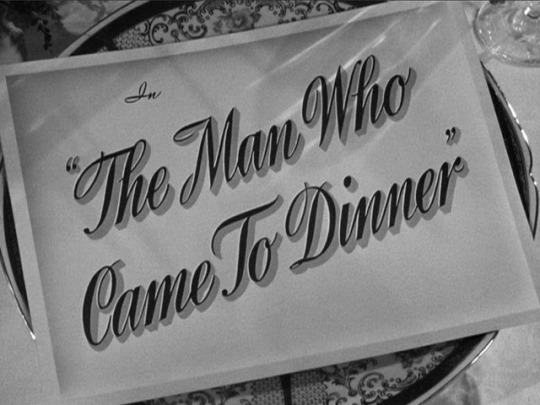
"The Man Who Came To Dinner” was a presentation of Lux Radio Theatre, broadcast on CBS Radio on March 27, 1950.

The Man Who Came to Dinner is a comedy in three by George S. Kaufman and Moss Hart. It debuted on October 16, 1939, at the Music Box Theatre in New York City, where it ran until 1941, closing after 739 performances. It then enjoyed a number of New York and London revivals.

The play was adapted for a 1942 feature film, scripted by Philip G. Epstein and Julius J. Epstein and directed by William Keighley. The film featured Monty Woolley, Bette Davis, Ann Sheridan, Billie Burke, Jimmy Durante, Mary Wickes and Richard Travis.
“The Man Who Came to Dinner” was previously presented on radio by Philip Morris Playhouse on July 10, 1942. Monty Woolley, who played the leading role in the film version, starred in the adaptation. It was broadcast again by Theatre Guild on the Air on ABC Radio November 17, 1946 starring Fred Allen. In 1949, “The Man Who Came to Dinner” was produced on “The Hotpoint Holiday Hour” starring Charles Boyer, Jack Benny, Gene Kelly, Gregory Peck, Dorothy McGuire, and Rosalind Russell.
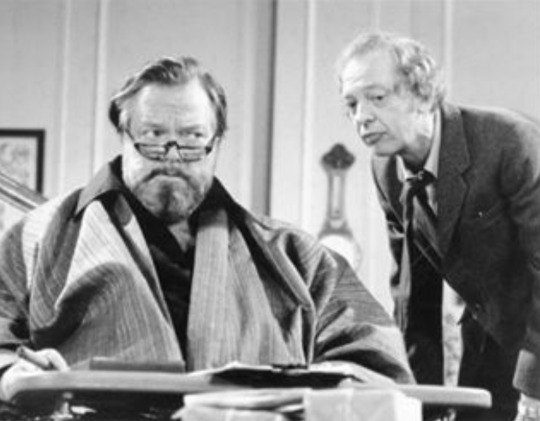
On October 13, 1954, a 60-minute adaptation was aired on the CBS Television series “The Best of Broadway.” A “Hallmark Hall of Fame” production was broadcast n November 29, 1972 starring Orson Welles, Lee Remick (Maggie Cutler), Joan Collins (Lorraine Sheldon), Don Knotts (Dr. Bradley), and Marty Feldman (Banjo). The 2000 Broadway revival was broadcast by PBS on October 7, 2000, three days after the New York production closed, and was also released on DVD.
Synopsis ~ The story is set in the small town of Mesalia, Ohio in the weeks leading to Christmas in the late 1930s. The outlandish radio wit Sheridan Whiteside is invited to dine at the house of the well-to-do factory owner Ernest Stanley and his family. But before Whiteside can enter the house, he slips on a patch of ice outside the Stanleys' front door and injures his hip. Confined to the Stanleys' home in a wheelchair, Whiteside and his retinue of show business friends turn the Stanley home upside down! But is he really injured?
This adaptation was written by S.H. Barnett. The characters eliminated for this adaptation include Richard Stanley, John, Mrs. Dexter, and Mrs. McCutcheon.
The show is hosted by William Keighley, who directed the 1942 film adaptation.

Lux Radio Theatre (1935-55) was a radio anthology series that adapted Broadway plays during its first two seasons before it began adapting films (”Lux Presents Hollywood”). These hour-long radio programs were performed live before studio audiences in Los Angeles. The series became the most popular dramatic anthology series on radio, broadcast for more than 20 years and continued on television as the Lux Video Theatre through most of the 1950s. The primary sponsor of the show was Unilever through its Lux Soap brand.
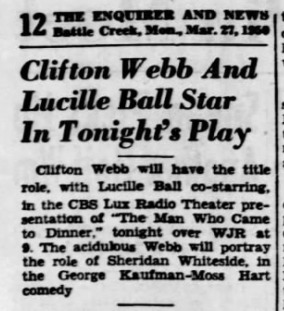
CAST
Lucille Ball (Maggie Cutler) was born on August 6, 1911 in Jamestown, New York. She began her screen career in 1933 and was known in Hollywood as ‘Queen of the B’s’ due to her many appearances in ‘B’ movies. “My Favorite Husband” eventually led to the creation of “I Love Lucy,” a television situation comedy in which she co-starred with her real-life husband, Latin bandleader Desi Arnaz. The program was phenomenally successful, allowing the couple to purchase what was once RKO Studios, re-naming it Desilu. When the show ended in 1960 (in an hour-long format known as “The Lucy-Desi Comedy Hour”) so did Lucy and Desi’s marriage. In 1962, hoping to keep Desilu financially solvent, Lucy returned to the sitcom format with “The Lucy Show,” which lasted six seasons. She followed that with a similar sitcom “Here’s Lucy” co-starring with her real-life children, Lucie and Desi Jr., as well as Gale Gordon, who had joined the cast of “The Lucy Show” during season two. Before her death in 1989, Lucy made one more attempt at a sitcom with “Life With Lucy,” also with Gordon.
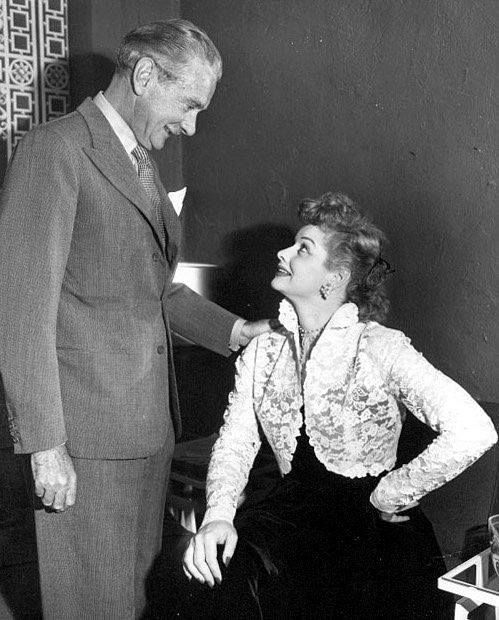
Clifton Webb (Sheridan Whiteside) had appeared with Lucille Ball in the 1946 film The Dark Corner. He was nominated for three Oscars. Webb had played the role of Sheridan Whiteside on stage for two years.
Eleanor Audley (Mrs. Stanley) appeared in several episodes of Lucille Ball’s “My Favorite Husband” as mother-in-law Letitia Cooper. Audley was first seen with Lucille Ball as Mrs. Spaulding, the first owner of the Ricardo’s Westport home in “Lucy Wants to Move to the Country” (ILL S6;E15). She returned to play one of the garden club judges in “Lucy Raises Tulips” (ILL S6;E26). Audley appeared one last time with Lucille Ball in a “Lucy Saves Milton Berle” (TLS S4;E13) in 1965.
Ruth Perrott (Sarah) played Katie the maid on Lucille Ball’s radio show “My Favorite Husband.” On “I Love Lucy” she played Mrs. Pomerantz in “Pioneer Women” (ILL S1;E25), was one of the member of the Wednesday Afternoon Fine Arts League in “Lucy and Ethel Buy the Same Dress” (ILL S3;E3), and played a nurse when “Lucy Goes to the Hospital” (ILL S2;E16).
Betty Lou Gerson is best remembered as the voice of Cruella De Ville in the original Disney film One Hundred and One Dalmatians (1961).
Stephen Dunn had appeared with Lucille Ball in Miss Grant Takes Richmond (1949).
John Milton Kennedy (Announcer)
‘DINNER’ TRIVIA

The same date as this radio adaptation (March 27, 1950), original star Monty Wooley arrived in Vancouver to perform in the play.

This broadcast aired the day after the “My Favorite Husband” episode “Liz’s Radio Script” also starring Lucille and Ruth Perrott.

Lucille Ball’s good friend and frequent co-star Mary Wickes was typecast as a nurse due to her breakthrough role as Nurse Preen in the Broadway, film, and television versions of The Man Who Came To Dinner.’ She does not play Nurse Preen in this adaptation. The character is given the first name Geraldine.

Lucille Ball previously appeared on “Lux Radio Theatre” for a November 10, 1947 adaptation of her film The Dark Corner (1946).

The first commercial talks about how Lux soap is gentle on stockings, like those worn by Betty Grable in Wabash Avenue.

The second commercial (between acts two and three) interviews actress Joan Miller, talking about the Warners picture Stage Fright, and how Lux helped keep the costumes looking great.
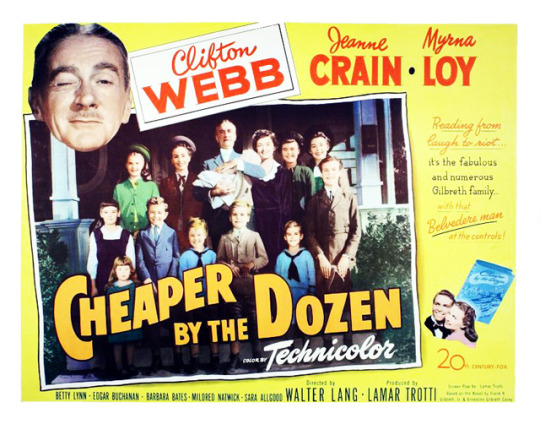
In the post show interviews, Clifton Webb promotes his next film Cheaper By The Dozen.
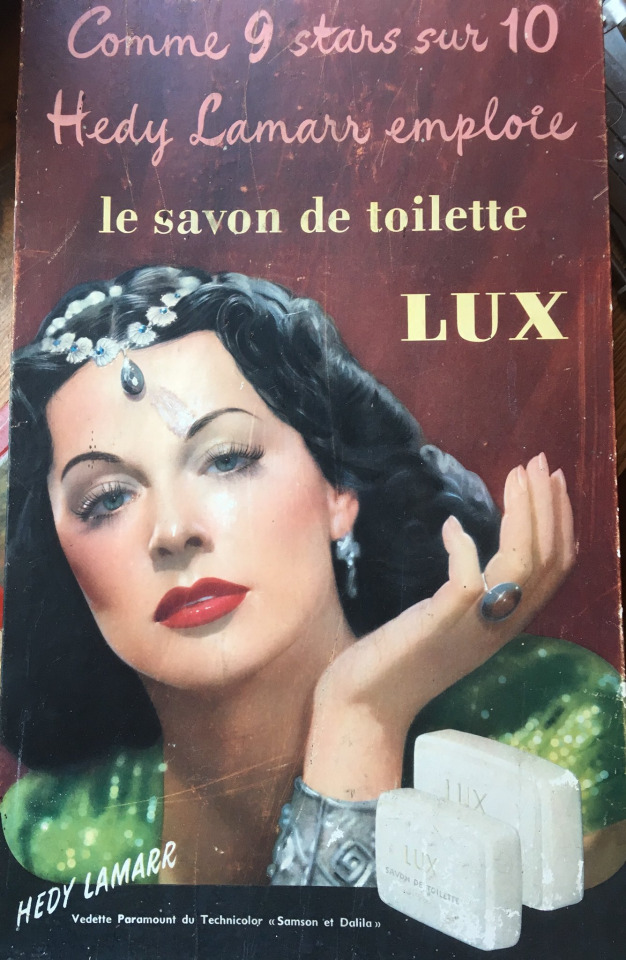
The final Lux commercial talks about how movie star Hedy Lamarr uses Lux.

The program presents a special address from president of the Red Cross, General George C. Marshall. The American Red Cross was mentioned on “My Favorite Husband” and Red Cross posters were frequently scene decorating the sets on “I Love Lucy.”

The ending of radio’s “My Favorite Husband” episode “Mother-in-Law” (November 4, 1949) starring Lucille Ball is identical to the ending of The Man Who Came To Dinner.
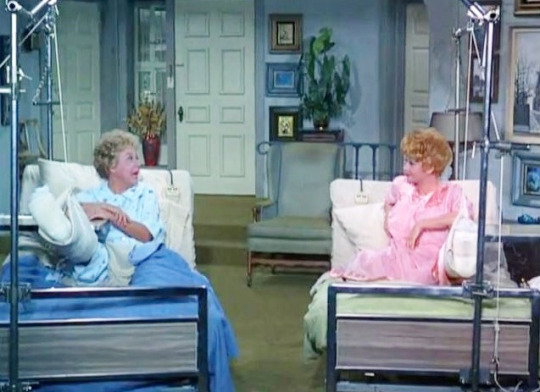
In “Lucy and Viv Reminisce” (TLS S6;E16) on January 1, 1968, while nursing Lucy, who has a broken leg, Viv slips and also breaks her leg. She says she feels just like a female version of The Man Who Came To Dinner.

“Vivian Sues Lucy” (TLS S1;E10) on December 3, 1962 also has a plot that resembles The Man Who Came To Dinner. Viv injures herself due to Lucy’s careless housekeeping, and is bedridden. Lucy goes out of her way to cater to her every whim, so that she won’t sue!
Although the play is fictional, it draws on real life figures and events for its inspiration.
Sheridan Whiteside was modeled on Alexander Woollcott.
Beverly Carlton was modeled on Noël Coward.
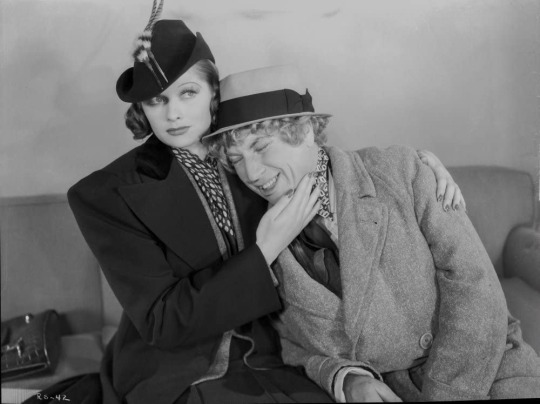
Banjo was modeled on Harpo Marx, and there is a dialogue reference to his brothers Groucho and Chico. When Sheridan Whiteside talks to Banjo on the phone, he asks him, "How are Wackko and Sloppo?"
Professor Metz was based on Dr. Gustav Eckstein of Cincinnati (with cockroaches substituted for canaries), and Lorraine Sheldon was modeled after Gertrude Lawrence.
The character of Harriet Sedley, the alias of Harriet Stanley, is an homage to Lizzie Borden. The popular jump-rope rhyme immortalizing Borden is parodied in the play.

Radio critic Dick Diespecker was not exactly enthusiastic about this adaptation.
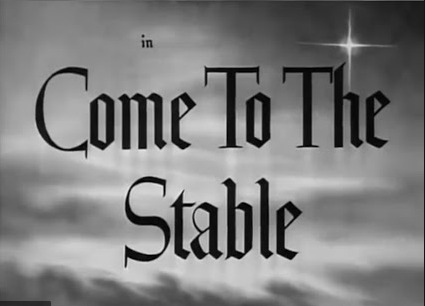
The announcer reminds viewers that next week “Lux Radio Theatre” will present “Come To the Stable” starring Loretta Young and Hugh Marlowe
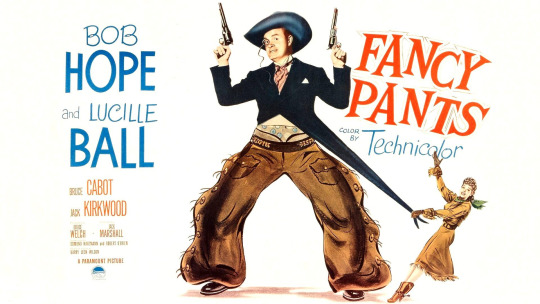
The announcer promotes Lucille Ball’s new picture Fancy Pants starring Bob Hope.
#Lucille Ball#The Man Who Came To Dinner#Clifton Webb#Eleanor Audley#My Favorite Husband#Ruth Perrott#Red Cross#Betty Lou Gerson#Hedy Lamarr#Betty Grable#Kaufman and Hart#Fancy Pants#Lux Radio Theatre#Lux#William Keighley
7 notes
·
View notes
Note
Hey Squid 👋🏻 Regarding your Sunrise AMA, what is one of your favourite moments from the story, or favourite thing about Sunrise in general? Was their a line or paragraph that stands out to you as one were you were like yes, this is good and just flowed easiest? Did you have any things that you knew straight away that you needed or wanted to write about? Also I was wondering what inspired you to have them join the Circus? And what do you think their kids jobs would be when they grow up? (I probably have a dozen more but I will just leave it at that for now 😊 ty!)
Heya! Let’s see. Since we’ve got multiple questions, I think I’ll leave the favorite moment(s) question for someone else to ask.
Favorite thing about Sunrise: I started it a few days after finishing the game. From the savefiles and my chapter 1 posting date, it was only four days. Obviously Arthur touched something emotional within me, like he did for a lot of people, and seeing Sadie so cold, alone, and fatalistic in the Epilogue hurt too. I wanted to see if I tried to write what could have happened after that fight on the ridge where it might lead. So I guess my favorite thing about Sunrise is that it debunked the assumption that Arthur had to die for the story to work or matter. I wrote a journey for him and for Sadie that a lot of people connected to and told me that meant a lot to them to see them thrive and heal. Characters don’t need a tragic ending to be deeply meaningful. Characters don’t have to die for redemption. It’s not somehow more artistically pure or daring to kill someone off. I didn’t break RDR1 by writing Sunrise, and I made the plot beats of the RDR2 Epilogue work. So Arthur’s death also frankly wasn’t necessary for plot integrity towards the events of 1907 and 1911.
A line or paragraph that I really enjoyed writing: I’ll go with one early on, from chapter 6, “Death Is A Woman”, that actually gave the chapter its title.
He managed a low, dark chuckle at that, leaning forward to rest his arms on his knees. His lungs gave a bit of a grouchy hitch at it. “Newsmen are a different breed of confidence men and liars, that’s all. Anyway, I’m sure Death’s got to be a woman, Sister, cause it seems even she won’t have me.”
That one made me feel like I really finally nailed Arthur and his character and state of mind in the weeks right after he’s had his entire life and identity knocked out from under him. But of course he has to couch it in a self-deprecating quip. Also kind of a funny line in retrospect because I hadn’t planned anything with Death/The Strange Man cropping up in the story at this point, but apparently Arthur’s wrong and Death is not a woman in RDRverse. ;)
Things I immediately needed or wanted to write about: Giving Sadie a voice and POV to show what was going on in her head. Beyond that, giving both of them the respect of acknowledging their PTSD, but doing my best to let show what trauma recovery really looks like, and showing that it’s possible. I didn’t want to either shrug it off as inconvenient to a happy ending, or else treat them like permanently broken things. I wanted it to be a journey. When it came to Arthur’s TB, I also wanted to write something realistic and accurate to the period in terms of his recovery rather than just sort of handwaving it. Historical medicine’s an interest of mine, so this was a good chance to explore some of that.
Joining the circus: This is one of the rarer instances where the tail sort of wagged the dog and I had to make something fit to an immovable future plan. I had them in 1904 having claimed a homestead up in Canada that needed to be settled and improved within three years. And I knew for 1907 Team Griffith needed to be in the five-state area of the RDR2 map in order to be involved in the Epilogue. I could have had them go back to Chuparosa and continue eking out a living, and debated pushing them back on the bounty hunter path to put them being sometimes in those American states that would let them cross paths with the Marstons somehow.
Didn’t really like it. Given how averse they were to bounty hunting together with two very young children at home, how Sadie absolutely wasn’t going to be the little wife sitting at home and letting Arthur go alone into danger as an alternative, and how much they both liked the idea that they no longer needed to live that sort of life, it felt like I needed something else. And it needed to be something that they could walk away with no offense taken from in three years. In retrospect, I could have had them hire on at MacFarlane’s full time rather than seasonal and developed that bond even more, but I ended up coming up with a circus that folds in 1907 as a good alternative.
Given they’re ace riders and crack shots and pretty fair actors, that Arthur was very used to a nomadic lifestyle, that circus folk are great actors and can deal some mild well-meaning trickery as part of the delight, that they were fairly egalitarian for the time, and that traveling circus folk sort of existed as a quasi-disreputable and tightly knit “outsider” group, it felt like a neat chance to mirror the gang, but in a positive way. So with the circus, I got to write Sadie and Arthur getting to live the best version of that kind of life, and sort of coming to peace with more of the past by it. Proving the things they missed about the gang weren’t the robberies or Dutch’s antisocial philosophy, but the people they loved and the freewheeling lifestyle. Also proving that while they enjoy that life, they do both really want to have something more settled and put down solid roots. Sadie misses that, and Arthur yearns for it as something he’s never had.
Also noting I hadn’t planned at all on Arkady Rudenko when I wrote Sadie and Arthur performing as the “Cossack Karolovs”, and I only realized that connection after I’d written the final chapter. Guess my unconscious brain knew more than I thought even back then, though I’d only earmarked a few months before that final chapter trying to possibly work in the interesting fact of Ukrainians being a very prevalent immigrant group to the Canadian prairie provinces at the time. But yeah, as an actual Cossack kid, Archie’s probably going to laugh his ass off.
Kid’s jobs: So I actually have a short scrapped bit that I didn’t include as an extra document at the end of chapter 88, though I debated it. I like the piece, but I wanted to leave it with Sadie and Arthur’s journal entries and the circle of things being sort of complete. It’s a preface to a book called “Red Dead Redemption” written by Jack--who’s become a writer of a fairly famous radio play turned TV serial--in the ‘60′s once all the OGs are finally gone and he feels safe to tell that story. It mentions that the illustrations were done by his wife, Bea. So yeah, Bea got Arthur’s artistic talent, and by submitting her work as “B.M. Griffith”, she managed to get some illustration jobs that would have been denied to her as “Beatrice”.
Mattie (Matt as he grows older), becomes a doctor. He’s already got the caring heart and desire to heal and help people. He’ll likely end up helping Felipe out as a teenager and learning some of the ropes there before going to college.
Susie ended up becoming a teacher. There were definitely still strictures at the time against married women working as teachers, so if/when she got married (and I think if so, she did it later in life) she’d have been expected to retire and effectively become a housewife. But she’d still keep teaching as a tutor.
Andy, with his energy and love of horses and the outdoors, actually shows a passion for farming and ranching. So he’s the one who ends up running the day-to-day of Paradise Run as the next generation.
Feel free to keep up with the AMA with those further questions! Might be better to send them in individually, though, as this one got pretty long. ;)
9 notes
·
View notes
Note
Do you spoil your kids?
OOC: I don’t know what verse you mean, but I’ll do pre-rdr 1 1910. I need Marston baby. (Game started in 1911) I love John being a father so much. Ughhhhhh, Give me more Marston baby!! Crayons and Teddy Bears were the latest toys in the 20th century, btw!
John rocked the sleeping bundle lying against his chest. Her dark curls shifting as he breathed.
“ I don’t think I do,” John answered earnestly.
“Abigail and I don’t often argue anymore, but this is one of the few things we do argue about. She says I’m not soft enough towards the boy. Showing him enough love and all that. She’s wrong. I try. I really do. Jack hasn’t wanted anything to do with me since he was around seven. All the stress of us moving around. Me trying but constantly failing to build a better home. Abigail’s frustration bleeding on to him.
I’m not saying she turned him against me - but he always takes her side. Like the incident at Pronghorn. We would have been homeless if I didn’t step in.
What kind of father would I be then? I was damned no matter what I did.
He’s fifteen now. He doesn't want to be held - he’s far too old anyway. He doesn’t want to play cards. Or fish. Or hunt. Or shoot. He just wants to read.
Then he complains I don’t do anything - yet I’m offerin’ all the time. He tells me he hates me sometimes. Yeah, I know. He’s a teen, but I kind of gave up. I’m the bad guy, no matter what I do.”
He looked down at his three old daughters and smiled.
“This one, though? She loves me. Her eyes light up when she sees me. She loves being held. I don’t buy her extra toys. She likes to color, so I’ll occasionally bring her extra paper. We bought her a teddy bear not long ago for her birthday. But we don’t really do much more than that. We don’t have the money.
She likes to follow me around the ranch. Abigail likes to call her duckie because she follows me around like one. But she does chores. They’re easy ones like dumping feed for the animals or helping with the water. I’m always with her anyway. Jack didn’t do any chores until he was eleven. Every time I tried to get him to do something - Abigail said he needed to study or that she’d handle it. Let a kid be a kid.
It’s different with Amelia. I don’t know why. I guess Abigail doesn’t want her becoming entitled.” he said with a laugh. He loved Abigail. He loved Jack - but sometimes, there was some hypocrisy.
“Alright. You caught me. Sometimes I sneak her cheese. It’s her favorite food. Sometimes, when Abigail goes out of town with Jack, I let her sleep in our bed. “ John shrugged.
“She’s three. Is there anything so wrong about that? I love her. I feel like I’ve done something right with her. She’s my chance for redemption. I’m not super religious, but God gave her to me. He gave me Jack. I’m doing what I can with him, but I was there from the very beginning with this one.” He said fondly as he booped her nose.
“I’d do anything for her. For Jack. For Abigail. But one day, it hurts me to think that she won’t want to sit on my lap anymore. She won’t ask Papa to come to help her. In the blink of an eye, she’ll be married. Have children of her own. Maybe she’ll take over the farm! She likes animals. Jack has already talked about how he can’t wait to go to college and leave us. It is what it is.” He said with a sigh.
“Maybe Abigail is right. She has my heart wrapped around her little finger. If anything. Anything. Ever happened to her. You bet there’s hell to pay.” He said severely, suddenly feeling out of breath.
Amelia yawned and scooched up to his chin.
“Hi, Papa.” she whispered sleepily.
“Hey, Darlin’,” John whispered back. He gave her a kiss on the cheek.
“That’s scruffy, Papa!” she squealed. John laughed.
“ I think it’s time we put you to bed. I hope that answers your question. Goodnight!” John said, tipping his head.
“Bye! “ the little night-gowned girl waved.
OOC: Jack has canonically mentioned “dumping” his parents several times to the point where John and Abigail had actually talked about how worried they were about retirement and what to do with the farm. They knew kids didn’t want to work on a farm or ranch.
7 notes
·
View notes
Text
Colombo 3Rd Test - India& Sri Lanka Share Honours On Day 1
Malaysia - The second team from Malaysia, Bernie Chan also is a mModel and actress, and Henry Chan is a chef the master of his own restaurant. Brother and sister, Bernie known as the face of Project Runway Malaysia, and Henry is complete unknown - a thing that can be an advantage on a show populated mostly with TV and media individuals.
Earl Grey - Earl Grey tea is flavored with bergamot fuel. Some tea companies mix the bergamot oil with other oils cut down the price making the tea. Stash uses 100% bergamot an individual also can taste the price. There is in contrast to a hot glass of Earl Grey in the morning to begin the day off perfect. *NOTE* I probably would not advise drinking Earl Grey cold. The taste is considerably appealing when steaming incredibly.
Australian Vacancies are skeptical about its effectiveness after the program first brush during the tour of Job Vacancies in Sri Lanka in 2008. They fought to obtain referrals, simply a right, while in Job Vacancies in Sri Lanka has successfully challenged the 1911 decision. "This is individual opinion," said Sehwag, who scored 7,152 from commonly 53.37 81 test.
In 1900, a successful financier called J.P. Mogan donated the Star of India to your American Museum of Natural History in Manhattan. Where it remains today. In 1964 the priceless sapphire together with three other famous gemstones, the eagle diamond, the delong star ruby along with the midnight sapphire were stolen from the museum. The robbery was carried out by Jack Murphy and Allan Kuhn, who both received a three year prison sentence for your crime. The Star of India was later recovered in a locker in the Miami bus station. The eagle diamond was never recovered.
Covert Affairs is plain engaging and fun to watch out. A little action. Some romance. Occasional humor. Regarding office nation-wide politics. But it's the cast, not only the personality of the leads however the supporting characters as well and ergo, also the director and writers, possess made this primary season so entertaining.
The strange thing is that if you focus on the object only, like the yacht together with the dream house, you are truly limiting yourself because the best manifestation via emotion, by way of sensation, along with experience per se. The object is just car.
Researchers usually tend to debate these subjects for time. At one time, cigarette companies claimed that smoking was great for your as well as wellness would an individual lose mass. Now, we know better.
Singapore - This Singapore team could end up being my favorite team. A suitable.D. Chan is a freelance writer and director and her friend, Faeza (Fuzzie) Sirajudin is often a teacher. Both women look a bit geeky and funky which, in my book, is cool. In addition they seem undertake a great sense of humor as they've joked regarding complete connected with fitness you will not slow they'll probably seem. I'm looking forward to learning more about this team - they look like they can be fun to watch.
1 note
·
View note
Text
Latin American Wars 1900-1941
My latest addition in the Osprey Men-at-Arms series is Latin American Wars 1900-1941. Subtitled “’Banana Wars,’ Border Wars & Revolutions,” it covers mostly small wars of Latin America. The booklet does not cover the Mexican revolution and civil wars of the teens and the Chaco War between Bolivia and Peru in the 1930s. That was covered in a separate booklet.
Philip S. Jowett mentions in the introduction that Honduras had no fewer than 17 attempted uprisings, military coups, and revolutions between 1920 to 1923. The armies were often small and ill-equipped but could have surprisingly high casualties as percentage of combatants. In 1906 Guatemala and El Salvador fought a war in one battle the Guatemalans had an estimated loss of 2,800 dead and El Salvador had 700 dead and another 1,100 wounded. Most of the wounded would probably die the next few days. This is out of armies that numbered between 3,000- 6,000 on average.
The first section covers Central America 1900-1911. Lots of Remington rolling block single shot rifles used and even some 1860s percussion cap Springfield muzzle loaders. The Mauser was new and expensive.
A section is given to soldiers of fortune, mostly Americans. The U.S. had recently fought a short war against Spain and then against Filipinos. You had men with training using machine guns and Central American presidents and dictators willing to hire them. There are some fascinating stories on Lee Christmas, Tracy Richardson, Emil Holmdahl, and Guy “Machine Gun” Molony. There is a great book
waiting to be written on U.S. soldiers of fortune of this period. The late Ivan Musicant wrote a great book The Banana Wars. This could be a quasi-sequel.
I was thinking while reading this section of Ben Haas as “John Benteen’s” “Fargo” series, Lou Cameron as “Ramsay Thorne’s” “Captain Gringo/Renegade,” and Peter McCurtin as “Jack Slade’s” “Gatling” book series. All men’s adventure series from the 1970s and 80s.
Mexico had three different army rebellions in the 1920s, an Indian Yaqui rebellion in 1926-27, and the Cristero Rebellion 1927-29 which had an anti-clerical government against a devout Catholic rural population. There was on rebellion 1938-39. You never hear about these rebellions. Lots of Mausers carried in the pictures.
Central America 1921-33 covers a brief war between Panama and Costa Rica 1921 and the Sandino Rebellion in Nicaragua 1927-1933. I already knew a fair amount on the Marines in Nicaragua from Musicant’s The Banana Wars.
Brazil is covered with a rundown of the army, two army rebellions, and one revolution. Peru and Columbia had “the Leticia Incident” in 1932-33. Peru learned some things and improved the army. Peru and Ecuador had the Zarumilla War in 1941 where the Peruvian Army had a mini-blitzkrieg using Czechoslovakian tanks and American and Italian aircraft. I found it very interesting a picture of Peruvian Civil Guard motorcyclists all armed with German made MP-34 submachine guns. The Peruvians were using French made “Adrian” helmets while the Ecuadorian Army was using Italian helmets. Ecuador attempt to involve the U.S. on their side claiming Peru was using Japanese troops.
By this point, a favorite rifle of mine from this period, the Czechoslovakian CZ-24 rifle was almost ubiquitous in South America.
The coup led by Sgt. Fulgencio Batista against the Machado regime in Cuba in 1933 is also covered.
After World War 1, there are lots of Spanish Mauser rifles. The U.S. did train and outfit the Cuban Army and Nicaraguan National Guard so they look like Marines and carry Springfield ’03 rifles and Browning Automatic Rifles giving them a distinctly different appearance from your average Banana republic army.
There are eight color plates of uniforms (and not so uniformed) combatants of these various conflicts. If you are thinking of writing some retro-pulp fiction in this period or some war-gaming scenarios, get this book. It is very enjoyable.
Latin American Wars 1900-1941 published first on https://sixchexus.weebly.com/
2 notes
·
View notes
Text
Most beneficial Horse Names of Perpetuity
There are a whole lot of regulations when it involves calling a steed for instance no obscenities, you can't duplicate the name of a Three-way Crown or Dog Breeders Mug Champion and if a steed is in the hall of popularity Horse his name is off limitations to make sure that forces Horse owners to be creative.
I've scoured the Web; I've called a few of the earliest Horse handicappers I understand searching for the very best, the coolest, the most symptomatic and totally suspicious names we can come up with.
When I made my choices I asked myself does this name make me grin. Does the name create an effective image in my mind? Can I claim this name before my mother without really feeling uncomfortable? Let's have a look.
The Past one decade
The Jockey Club has actually definitely tightened up what they take into consideration appropriate pure-blooded names so the previous ten years are not nearly as vivid as the 100 plus years before. Here are a few of the very best Horse names Farmpally.com of the past 10 years.
Funny Cide - The 2003 Derby champions name is a play on his daddies name Distorted Humor as well as his moms Belle's Great Cide. But to me the name Funny Cide sounds like a Superman villain some type of Bizarro World version of Jack Kevorkian.
Big Brown - Called after UPS, Big Brown delivered the excellent product placement. UPS contractor Paul Pompa Jr. named his Horse after his biggest customer. Now if only Kit Kat candy bars and Bombay Sapphire Gin would name an equine after me.
Stevie Wonderboy - Owner Merv Griffin said of his Horse, "My Horse isn't blind he simply uses huge sunglasses.
Simply Really Great Names
Tabasco Feline - The 1994 Belmont stakes champion was as fiery as his name ideas. Tabasco Feline put the kid of fitness instructor D. Wayne Lukas in a coma for several weeks after breaking lose throughout a training session.
Nutzapper - Nutzapper was the name offered to Andy Hillis' gelding Horse until the Jockey Club found out the name had nothing to do with cooking chestnuts in oil. The Horse is currently called Awaiting Justice.
Ghostzapper - ALRIGHT maybe I such as the name zapper for a horse however Ghostzapper not just had a great name; he has the heart of a lion. After winning the 2004 breeders mug he might have retired to stud, earning a trendy $200,000 per go round (My charges are substantially much less) he came back for one more race easily winning the 2005 Metropolitan Handicap.
That's a Silly Name for a Horse
The Belmont Risks has a history of squashing the imagine Triple Crown hopefuls with 20 steeds, consisting of ins 2015 Huge Brown, winning both the Kentucky Derby and also the Preakness stakes before catching the Belmont. During the very early years, the Belmont likewise had an unusual run of winners with strange names, well strange for purebred steeds.
1875 - Calvin
1889 - Eric
1905 - Tanya
1908 - Colin
1928 - Vito
The Preakness Risk had a couple champions named after my auntie as well as uncle.
1876 - Shirley
1879 - Harold
I hope this dark duration in auto racing's history never ever duplicates itself.
I'm Feeling Tipsy
The great feature of the Kentucky Derby is all the traditions that come with the very first Saturday of May. The well dressed gents, the females putting on hats they 'd never ever wear beyond Churchill downs and certainly my favorite the Mint Julep. Google the dish, it's a wonderful combination of Kentucky Bourbon, Spearmint, Powdered Sugar and also water. Several recipes will not tell you yet I will allow you know a little key. The secret to highlighting the special preferences of a Mint Julep is to consume it from a metal cup.
Allow's take a look at a couple alcohol inspired names
Go with Gin - Mastered a careless track in 1994 to win the 120th Kentucky Derby an offer instructor Nick Zito his second Derby victor in 4 years.
Not Bourbon - This Canadian victor of the 2008 Queen Plate might be in the competing following year's Kentucky Derby yet his name assurances he'll be dealt with like an outsider in the land of Makers Mark.
Just How Times Have Actually Changed. Where was Al Sharpton, when we needed him?
Multiple years means several equines were registered under the same name. You can kind of make an instance for the horses called prior to the elevation of the civil legal rights movement but for the 3 equines registered after 1975 you just have to shake your head.
Tar Baby (1944, 1975, and also 1985).
Uncle Remus (1944 as well as 1965).
Darkie (1950 ).
Uncle Tom (1950 ),.
Jungle Bunny (1953 ).
Blackface Minstrel (1980 ).
The most egregious example of this lax registration completed 3rd place in the 1911 Preakness Risks. Well let's just claim the name rhymes with bigger and is made use of frequently by Chris Rock and also Dr. Dre.
Can they claim that on Tv?
Late Fantastic Comedian Bill Hicks was in advance of his time, his comedy was typically over the heads of his target market, which would certainly result some grumbling as well as some heckles from a quick-tempered target market. Here are some of the most suggestive, sexually suggestive and down best filthy Horse names from the past 150 years.
1 note
·
View note
Text
TIN PAN ALIAS
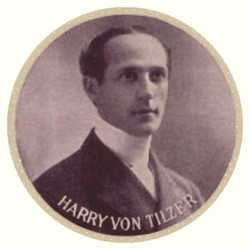
They're no longer the household names they once were. In fact their names were not really their names. But between them Harry and Albert Von Tilzer were two of the more successful and prolific songwriters and publishers on Tin Pan Alley, and many of their songs are familiar today as icons of the so-called Gay Nineties and early 1900s. One of them still gets played every day there's a baseball game.
Harry and his brothers were not born Von Tilzers. Harry was born Aaron Gumbinsky or Gummblinsky to Polish Jewish immigrants in Detroit in 1872. He grew up in Indianapolis, where the brothers were all born. The family shortened the name to Gumm, leading to the often-repeated misinformation that Frances Gumm, better known as Judy Garland, was Harry's niece. In fact, her father Frank Gumm was not one of the Gumbinsky/Gumm/Von Tilzer brothers, but a cracker from Tennessee (and predominantly homosexual, interesting when you consider Garland's complex personal and professional relationships with gay men later, not to mention Liza's).
At fourteen Harry Gumm ran away to join the Cole Brothers Circus. He played piano and wrote songs for a traveling theater troupe and changed his name on the road, taking his mother's maiden name and adding the Von for a touch of class. His brothers, all of whom went into the music business after him, followed suit. Making for more confusion, in 1929 a Helen Von Tilzer would marry one of the Marx Brothers -- Gummo, of course. Because of that preposterous-seeming coincidence she's often written up as Harry's sister, but in fact she was born Helen Theaman in New York. Von Tilzer was her first husband's name, and he seems to have been a real Von Tilzer, also not related to Harry and the fake Von Tilzer clan.
Harry worked in burlesque, with medicine shows and in vaudeville, specializing, naturally, in "Dutch" (German) routines. In 1892 he arrived in New York City by train as a groom for a carload of horses. He had one dollar and sixty-five cents in his pocket. For the next six years he struggled, playing saloon piano and writing songs that Tony Pastor and others bought from him at two bucks each.
According to David A. Jansen's Tin Pan Alley: An Encyclopedia of the Golden Age of American Song, Harry wrote his first hit under some duress. He and lyricist Andrew B. Sterling were sharing a furnished room on East Fifteenth Street in 1898 and were "three weeks behind on their rent. When a final bill was slipped under their door, they used the paper to write a chorus and then a verse of what turned out to be their first successful publication, 'My Old New Hampshire Home.'" It was classic barbershop quartet treacle. William Dunn of the Orphean Music publishing company paid them fifteen dollars for it -- a week's rent on the room -- and proceeded to sell more than a million copies in sheet music.
Then Dunn was bought out by Louis Bernstein and Maurice Shapiro, founders of one of Tin Pan Alley's longest-lived hit factories -- it still exists as Shapiro Bernstein & Co., with a catalogue that includes "Ring of Fire," "Yes! We Have No Bananas," "Walk on the Wild Side" (the original, not Lou Reed's song) and the immortal "Wolverton Mountain." They paid Von Tilzer four thousand dollars, a considerable sum in those days, to join them as a partner in the firm. A few years later he would leave them and start his own publishing company.
In 1900 he was relaxing in a whorehouse (or just at a party, depending on the source), noodling on the piano to some lyrics handed him by the British lyricist Arthur Lamb. When Harry saw the girls around him crying, he figured he'd noodled up a smash hit. It was. "A Bird in a Gilded Cage" sold more than two million copies of sheet music, and was one of the most popular weepers of the age, a song we still associate more than maybe any other with late Victorian mawkishness. This time Harry earned far more than fifteen bucks.
He and Lamb collaborated on two more tearjerkers in 1902, "The Banquet in Misery Hall" and the equally lugubrious "The Mansion of Aching Hearts," which a few singers made into hit recordings. That same year a scrawny Jewish kid from the Lower East Side went busking in the saloons on the Bowery, belting out "Mansion" in a raspy tenor to the pie-eyed sailors and hookers who tossed pennies at him. That kid, Izzy Baline, went up to Tin Pan Alley on Twenty-Eighth Street to meet Von Tilzer, who hired him as a song plugger and "boomer." A boomer was a plant in the audience at the music hall or vaudeville house whose job was to cheer and shout "Encore!" when the publisher's new song was performed. Von Tilzer, who was an expert plugger and boomer himself, showed Izzy the ropes. Izzy, who would invent his own German-sounding professional name, Irving Berlin, went on to eclipse his mentor's fame.

But Von Tilzer was no slouch. "Wait 'Til the Sun Shines, Nellie," "I Want a Girl (Just Like the Girl Who Married Dear Old Dad)," "In the Sweet Bye and Bye" and "I Love My Wife, But Oh You Kid!" were all major hits, and he wrote thousands more. That was not unusual. In the crowded Tin Pan Alley milieu, where publishing companies were stacked four and five stories high door-to-door, the competition was brutal, the pace ferocious and the ruling business model crudely simple: Throw as many songs at the public as you can possibly churn out, and hope one sticks once in a while. The lists of songs published on Tin Pan Alley in its glory years, roughly the 1880s through the 1920s, are stupefyingly long -- tens of thousands of songs, hurled at the public in live performances, as sheet music and piano rolls, on recorded wax cylinders, in early versions of coin-operated jukeboxes, on phonograph discs after the introduction of the affordable Victrola in 1906, and eventually on radio. Almost all of those tens of thousands of songs are forgotten now. In fact the vast majority barely made an impression when they were new. You just kept cranking them out, praying for a hit now and again.
Von Tilzer was out there pitching with the best of them. Like all serious Tin Pan Alley composers he jumped on every band wagon that rolled down Twenty-Eighth Street. He wrote Irish and "Dutch" numbers when they were fads, beer-drinking songs when they came into fashion (including one called "Under the Anheuser Busch"), schmaltzy kiddie songs, and songs capitalizing on every new dance craze, from the bunny hug to the turkey trot to the hesitation waltz. He threw three of them together in one song, "You Can Tango You Can Trot Dear but Be Sure and Hesitate." He wrote novelty songs like "The Ragtime Goblin Man" and topical ones like "Old King Tut," a hit for Sophie Tucker the year after Tut's tomb was discovered in 1922.
He also wrote several hit coon songs. Coon songs spun off from minstrel shows in the 1880s. In the 1890s and 1900s hundreds and hundreds of songs with "coon" in the title were published, usually sung to ragtime tunes. They often replaced the Old Plantation nostalgia of the traditional minstrel song with ruder, more overtly racist stereotypes. They were hugely popular, and Von Tilzer wrote his share, songs like "Alexander" (familiar to audiences then as a hifalutin' name for a blackface minstrel character), "Mammy's Kinky-Headed Coon," "My Lady Hottentot" and "Rufus Rastus Johnson Brown." Performers of old-timey music still record that one, though it may be best known for the 1970 funk version by the great Rufus ("Do the Funky Chicken") Thomas. In 1911, Berlin would upstage Von Tilzer's "Alexander" with his own ragtime-y coon song, "Alexander's Ragtime Band." Any similarity to his mentor's hit was purely intentional.
By the middle of the 1920s Von Tilzer had composed something like two thousand published songs, including a dozen million-sellers and as many as a hundred that sold half a million. His output slowed down in the later 1920s and 1930s, but he still credibly claimed to have written some eight thousand tunes. Like many Tin Pan Alley greats, including Berlin, he did it without ever learning to read or write a note of music.
Time and tastes moved on. Harry quietly lived out his last years in the Hotel Woodward, a Broadway establishment favored by show folk, and died there in 1946.
Meanwhile, Harry had brought Albert and the other brothers to New York. Jules worked for Harry. Will started a song publishing company, and Albert and Jack partnered in another. Albert was also a songwriter. He and vaudevillian Jack Norworth collaborated on the giant "Take Me Out to the Ball Game" in 1908; according to an unconfirmed but persistent legend, Albert never actually saw a ball game until the late 1920s. Some of Albert's other hits include "Put Your Arms Around Me, Honey," "I'll Be With You in Apple Blossom Time," the minstrel song "Down Where the Swanee River Flows" (a hit for Al Jolson in blackface), the Prohibition lament "The Alcoholic Blues" ("No more beer my heart to cheer/ Goodbye whiskey, you used to make me frisky/ So long highball, so long gin/ Oh, tell me when you comin' back agin"), the Hawaiian-themed ragtime hit "Oh, How She Could Yacki Hacki Wicki Wacki Woo," and another novelty hit, the zany bum-diddy-bum jungle number "Oh By Jingo!" with lyrics by Lew Brown. ("We will build for you a hut/ You will be our favorite nut/ We will have a lot of Oh By Gollies/ And we'll put them in the Follies.") Born Louis Brownstein in Odessa, Brown had fled the pogroms with his family and settled in the Bronx. In a long career he collaborated with many Tin Pan Alley and Broadway composers on classics like "Life Is Just a Bowl of Cherries," "You're the Cream in My Coffee," "Sunny Side Up" and "That Old Feeling." It was guys like Brown, the Von Tilzers and Berlin whom the rabid anti-Semite Henry Ford had in mind when he ranted, "The people are fed from day to day on the moron suggestiveness that flows in a slimy flood out of 'Tin Pan Alley,' the head factory of filth in New York which is populated by the 'Abies,' the 'Izzies,' and the 'Moes'..." Ignoring him, lots of people recorded the moron suggestiveness of "Oh By Jingo!" -- Danny Kaye, Spike Jones, Stephane Grappelli and Chet Atkins among them.
Following the addition of sound to commercial movies, the studios lured more and more of the music business out to Hollywood in the 1930s. After all, the first hit talkie, The Jazz Singer, was really a singie. Albert went too. He worked in film and tv, mostly contributing to soundtracks of now obscure pictures. He died in L.A. in 1956. By that point much of the Von Tilzer catalogue, especially the older and mushier songs, had faded away, except at ball games. Then in 1958 Lawrence Welk, than whom no one loved old-fashioned schmaltz more, bought the catalogue and engineered a Von Tilzer revival. When the Songwriters Hall of Fame began in 1969, Harry and Albert were among the first voted in.
by John Strausbaugh
#John Strausbaugh#The Chiseler#Harry von Tilzer#Tin Pan Alias#I want a Girl Just Like the Girl Who Married Dear old Dad
3 notes
·
View notes
Text
LIZ HAS THE FLIMJABS
December 30, 1950

“Liz Has the Flimjabs” (aka “A Severe Case of Flimjabs”) is episode #112 of the radio series MY FAVORITE HUSBAND broadcast on December 30, 1950.
This was the 14th episode of the third season of MY FAVORITE HUSBAND. There were 31 new episodes, with the season ending on March 31, 1951.
Synopsis ~ Liz wants a mink coat from George, so she pretends to be sick in order to get his sympathy - and the coat! George is on to her tactics, and decides to give her the scare of her life - literally!
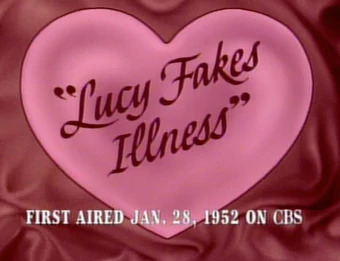
Note: This program served as the basis for the “I Love Lucy” episode “Lucy Fakes Illness” (ILL S1;E16) filmed on December 18, 1951 and first aired on January 28, 1952. The role of the Doctor was taken by Hal March, who was actually playing an actor friend of Ricky’s named Hal March pretending to be a doctor. On television, Lucy also adopts a psychological illness in addition to her physical ailments. There was no mention of Christmas or New Years on the television show.

“My Favorite Husband” was based on the novels Mr. and Mrs. Cugat, the Record of a Happy Marriage (1940) and Outside Eden (1945) by Isabel Scott Rorick, which had previously been adapted into the film Are Husbands Necessary? (1942). “My Favorite Husband” was first broadcast as a one-time special on July 5, 1948. Lucille Ball and Lee Bowman played the characters of Liz and George Cugat, and a positive response to this broadcast convinced CBS to launch “My Favorite Husband” as a series. Bowman was not available Richard Denning was cast as George. On January 7, 1949, confusion with bandleader Xavier Cugat prompted a name change to Cooper. On this same episode Jell-O became its sponsor. A total of 124 episodes of the program aired from July 23, 1948 through March 31, 1951. After about ten episodes had been written, writers Fox and Davenport departed and three new writers took over – Bob Carroll, Jr., Madelyn Pugh, and head writer/producer Jess Oppenheimer. In March 1949 Gale Gordon took over the existing role of George’s boss, Rudolph Atterbury, and Bea Benaderet was added as his wife, Iris. CBS brought “My Favorite Husband” to television in 1953, starring Joan Caulfield and Barry Nelson as Liz and George Cooper. The television version ran two-and-a-half seasons, from September 1953 through December 1955, running concurrently with “I Love Lucy.” It was produced live at CBS Television City for most of its run, until switching to film for a truncated third season filmed (ironically) at Desilu and recasting Liz Cooper with Vanessa Brown.
MAIN CAST

Lucille Ball (Liz Cooper) was born on August 6, 1911 in Jamestown, New York. She began her screen career in 1933 and was known in Hollywood as ‘Queen of the B’s’ due to her many appearances in ‘B’ movies. With Richard Denning, she starred in a radio program titled “My Favorite Husband” which eventually led to the creation of “I Love Lucy,” a television situation comedy in which she co-starred with her real-life husband, Latin bandleader Desi Arnaz. The program was phenomenally successful, allowing the couple to purchase what was once RKO Studios, re-naming it Desilu. When the show ended in 1960 (in an hour-long format known as “The Lucy-Desi Comedy Hour”) so did Lucy and Desi’s marriage. In 1962, hoping to keep Desilu financially solvent, Lucy returned to the sitcom format with “The Lucy Show,” which lasted six seasons. She followed that with a similar sitcom “Here’s Lucy” co-starring with her real-life children, Lucie and Desi Jr., as well as Gale Gordon, who had joined the cast of “The Lucy Show” during season two. Before her death in 1989, Lucy made one more attempt at a sitcom with “Life With Lucy,” also with Gordon.
Richard Denning (George Cooper) was born Louis Albert Heindrich Denninger Jr., in Poughkeepsie, New York. When he was 18 months old, his family moved to Los Angeles. Plans called for him to take over his father’s garment manufacturing business, but he developed an interest in acting. Denning enlisted in the US Navy during World War II. He is best known for his roles in various science fiction and horror films of the 1950s. Although he teamed with Lucille Ball on radio in “My Favorite Husband,” the two never acted together on screen. While “I Love Lucy” was on the air, he was seen on another CBS TV series, “Mr. & Mrs. North.” From 1968 to 1980 he played the Governor on “Hawaii 5-0″, his final role. He died in 1998 at age 84.
Bea Benadaret (Iris Atterbury) was considered the front-runner to be cast as Ethel Mertz but when “I Love Lucy” was ready to start production she was already playing a similar role on TV’s “The George Burns and Gracie Allen Show” so Vivian Vance was cast instead. On “I Love Lucy” she was cast as Lucy Ricardo’s spinster neighbor, Miss Lewis, in “Lucy Plays Cupid” (ILL S1;E15) in early 1952. Later, she was a success in her own show, “Petticoat Junction” as Shady Rest Hotel proprietress Kate Bradley. She starred in the series until her death in 1968.
Ruth Perrott (Katie, the Maid) was also later seen on “I Love Lucy.” She first played Mrs. Pomerantz, a member of the surprise investigating committee for the Society Matrons League in “Pioneer Women” (ILL S1;E25), as one of the member of the Wednesday Afternoon Fine Arts League in “Lucy and Ethel Buy the Same Dress” (ILL S3;E3), and also played a nurse when “Lucy Goes to the Hospital” (ILL S2;E16). She died in 1996 at the age of 96.
Bob LeMond (Announcer) also served as the announcer for the pilot episode of “I Love Lucy”. When the long-lost pilot was finally discovered in 1990, a few moments of the opening narration were damaged and lost, so LeMond – fifty years later – recreated the narration for the CBS special and subsequent DVD release.
Gale Gordon (Rudolph Atterbury) does not appear in this episode.
GUEST CAST

Frank Nelson (Dr. Stevenson) was born on May 6, 1911 (three months before Lucille Ball) in Colorado Springs, Colorado. He started working as a radio announcer at the age of 15. He later appeared on such popular radio shows as “The Great Gildersleeve,” “Burns and Allen,” and “Fibber McGee & Molly”. Aside from Lucille Ball, Nelson is perhaps most associated with Jack Benny and was a fifteen-year regular on his radio and television programs. His trademark was playing clerks and other working stiffs, suddenly turning to Benny with a drawn out “Yeeeeeeeeees?” Nelson appeared in 11 episodes of “I Love Lucy”, including three as quiz master Freddy Fillmore, and two as Ralph Ramsey, plus appearance on “The Lucy-Desi Comedy Hour” - making him the only actor to play two different recurring roles on “I Love Lucy.” Nelson returned to the role of the frazzled Train Conductor for an episode of “The Lucy Show” in 1963. This marks his final appearance on a Lucille Ball sitcom.
The doctor’s surname may be a reference to noted costume designer Edward Stevenson, who designed gowns for Lucille Ball in more than a dozen RKO films and would eventually become costume designer of “I Love Lucy” after the departure of Elois Jenssen in 1955.
EPISODE
ANNOUNCER: “And now, let’s look in on the Coopers. It’s evening, and Liz and George are sitting in the living room admiring their Christmas tree."

George wonders if it is time to take the Christmas tree down but Liz doesn’t want to. They agree to put away their presents instead and start to talk about the gifts they didn’t give or get.
Liz nearly bought George a set of matching golf clubs. George says he nearly bought her a mink jacket. He says he saw it in the window at Millers, but realized he couldn’t afford it. Liz sadly reminds him that she has never had a fur coat and wonders if they could afford it if they all their Christmas gifts to the store. George says it still wouldn’t be enough, but Liz wants to wear something special to the Atterbury’s New Year’s Eve party.
Next morning, in the kitchen, Katie the Maid asks Liz why she is so sad. Liz tells her about her mink jacket dreams. Liz solicits Katie’s opinion on how she can’t best get George to get her a mink jacket in time for the party. Liz decides to play sick since George always gets her what she wants when she’s ill.
After dinner, Liz and George contemplate what to do. Liz suggests going to the movies to see Harvey starring Jimmy Stewart, which is playing at the Strand.

Harvey is a comedy about a man whose best friend is a six-foot tall imaginary rabbit. It premiered just ten days earlier before this broadcast and starred James Stewart. The film won an Oscar for Josephine Hull. The screenplay was based on the 1944 Broadway play of the same name by Mary Chase which won the 1945 Pulitzer Prize for Drama.
Before Liz can tell George the second feature, she starts to writhe in pain! Amid moans and groans, Liz details the pain for George. She says she used to have these attacks as a child. When she says the only thing that sometimes helps is little gifts to make her happy, George gets suspicious. He quickly leaves the room to make a phone call, which Liz thinks is to buy her a mink jacket, but he has actually called the doctor!
End of Part One

Bob LeMond presents a live Jell-O commercial, giving a basic recipe for preparation of all delicious six flavors!
ANNOUNCER: “As we look in on the Coopers once again, Liz is pretending to be sick and George, who is worried about her, has called the doctor.”
The doorbell rings and George admits Dr. Stevenson (Frank Nelson). Before seeing Liz, George tips him off that Liz may have a rare disease and that the only cure is a mink coat! George asks him to give her a good scare and the Doctor agrees to play along.

Entering the bedroom, Liz immediately tells the Doctor she feels much better. But after a quick exam, the Doctor diagnoses Liz with a rare tropical disease from the West Indies called the ‘Flimjabs’. The only cure is to operate and remove her ‘torkle’ but warns her that she will never be able to ‘yammle’ again. The Doctor explains that ‘yammling’ is an involuntary peristalsis of the transverse clavis.
GEORGE: “Doctor, do you have to remove the whole torkle?”
DOCTOR: “Maybe we’ll be lucky and can save half of it. After all, half a torkle is better than none.”
LIZ: “Well, I should say so! I’d hate to think of never yammeling again!”
The Doctor says that they must now wait 24 hours and see if she turns green.
DOCTOR: “If you turn green, three hours later (snaps his fingers) gone.”
LIZ: (snaps) “Gone?”
DOCTOR: (snaps) “Gone.”

For the television script, the ‘Flimjabs’ was renamed the 'Gobloots’ - a rare tropical disease that carried into America on the hind legs of the 'boo-shoo bird.’ It can necessitate a person having to undergo a 'zorchectomy’ – total or partial removal of the 'zorch’. Even if doctors are able to save half a person’s 'zorch,’ the patient will never be able to 'trummle’ again. 'Trummling’ is a mysterious involuntary internal process. Finally, if you turn green while suffering from the 'gobloots’ you will be dead in 30 minutes!
Iris Atterbury drops by to see Liz on her way to the Bridge Club meeting. Liz tells her that she has been diagnosed with the Flimjabs.
IRIS: “Oh, how exciting! This will make Betty Ricky’s gallstones look sick! She’ll be absolutely green.”
LIZ: “She's not the only one. That’s one of the danger signs. I may turn green.”
IRIS: “With a green face and red hair, you’ll be out of this world.”
LIZ: “Yes, that’s what I’m afraid of.”
Iris is overcome with emotion at the thought of losing Liz. She doesn’t want to leave, but the ice cream for the Bridge Club meeting is in the car and it’s melting!
That night, Doctor Stevenson returns to check on Liz. Answering the door, George confesses that he’s put a green light bulb in Liz’s bedroom light. As soon as George turns on the lights, Liz shrieks seeing her green hands! Her face and hair have turned green, too! Liz thinks the men have Flimjabs too, because they are also green, but then the truth sets in.

LIZ: “Oh, no! This is the end! I’m looking at the world through green colored eyeballs!”
Liz dramatically declares that she’s dying. George accuses her of being over-dramatic.
LIZ: “I’m sorry, George. But I don’t die every day and it’s new to me.”
Before her imminent demise, Liz confesses to all the car accidents she’s had and hidden by having the car fixed without telling him.
LIZ: “In fact, the only thing left of the original car you bought is the ashtray in the back seat!”
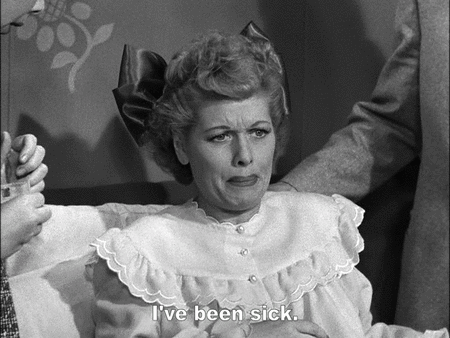
Then Liz bravely confesses to pretending to be sick to get him to buy her a mink coat. George also needs to make a confession: it was all a trick. There is no such thing as ‘Flimjabs’ and the light is from a green light bulb!
The phone rings and it is Iris, tearfully calling from the Bridge Club meeting. The girls have just had a memorial ceremony for Liz by turning her chair to the wall and smashing her teacup in the fireplace. Before Liz can tell Iris that it was a joke, she learns that they all chipped in and bought her a goodbye present: a mink coat! Liz hangs up in tears. George is confused.
GEORGE: “Isn’t that what you wanted?”
LIZ: “Yeah, but I have to die to get it!”
END OF EPISODE
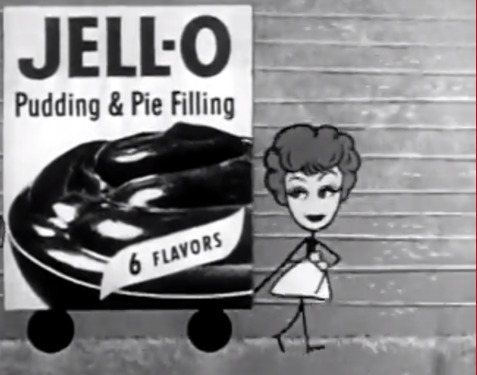
In the live Jell-O commercial, Lucille Ball and Bob LeMond play a couple of nomads lost in the desert. Lucy uses her ‘Isabella Clump’ voice as ‘Smith’. Bob is looking for his camp, near a big dune.
LUCY / ‘SMITH’: “A dune? What’s a dune?”
BOB: “What’s a dune????”
LUCY / ‘SMITH’: “I dunno. What’s a-dune with you?”
Smith sees a mirage - a big bowl of Jell-O! After describing the six delicious flavors, Bob suggests they go home.
BOB: “Go home? We’re lost in the desert!”
LUCY / ‘SMITH’: “Why don’t we each take one of those cars.”
BOB: “What cars?”
LUCY / ‘SMITH’: “The ones over there. That’s a two-car mirage!”


The same date this episode was broadcast, columnist Sid Shalit in the New York Daily News reported that a television situation comedy was being prepared starring Lucille Ball and Desi Arnaz in the mold of “My Favorite Husband”. Clearly, the radio series was winding down. This was the final episode of 1950 with only 16 episodes left.

Meanwhile, in addition to radio and television, Ball was on the nation’s movie screens in two 1950 films: The Fuller Brush Girl and Fancy Pants.
#My Favorite Husband#Liz has the Flimjabs#I Love Lucy#Lucy Fakes Illness#Lucille Ball#Richard Denning#Bea Benadaret#Ruth Perrott#Bob Lemond#Radio#CBS#Jello#1950#Harvey#Jimmy Stewart#Frank Nelson#Fuller Brush Girl#Fancy Pants
11 notes
·
View notes
Photo

Wellen: German Federated Pop and New Wave
Fifth mix in my survey of European pop music in the early-to-mid 1980s. What you’ve missed if this is new to you:
Spain & Portugal | France | Italy & Greece | Northern Europe
This time around it’s Germany, and Austria and Germanic Switzerland. Here’s the tracklist, notes are below the line.
Joachim Witt, “Goldener Reiter”
Lilli Berlin, “Ostberlin—Wahnsinn”
Babsi Balou, “Hochsaison im Eissalon”
Hubert Kah, “Engel 07″
Carmen, “Es ist kalt um mich herum”
Grauzone, “Eisbär”
Trio, “Bum Bum”
Peter Schilling, “Terra Titanic”
Minisex, “Rudi, gib acht”
Spider Murphy Gang, “Wo bist du?”
Nina Hagen, “Zarah (Ich weiß, es wird einmal ein Wunder geschehn)”
Der Plan, “Gummitwist”
Cosa Rosa, “Millionenmal”
Contact, “Schwarze Madonna”
Neonbabies, “Horizonte ohne Ende”
Collage, “Mit den Puppen tanzen”
mittageisen, “Automaten”
Nena, “Irgendwie, irgendwo, irgendwann”
Rheingold, “Via satellit”
Falco, “Junge Roemer”
Xmal Deutschland, “Feurwerk (31-Dez)”
Wellen: german federated pop and new wave
This is the fifth mix in this series, and the first time since the mix that started it all that there’s an actual scene to document. Which isn’t to suggest that new wave (and punk) didn’t affect French, Italian, and Scandinavian music of the 1980s, but that new wave in those countries didn’t cohere into a self-sustaining cultural space; rather, it fractured, either assimilating into the light entertainment traditions of those various nations, or remaining defiantly underground and rarely succumbing to such sellout moves as TV appearances or chart success.
But in Germany, as in Spain, the Neue Deutsche Welle (new German wave) saw electronic experimentation combined with punk energy (and, just as important, punk silliness) and the whole mess achieving mainstream velocity. As with the Spanish Movidas, it’s a matter of dispute how long the actual scene lasted before burning out and either being co-opted by the mainstream or transforming the mainstream enough to be indistinguishable from it. My goal with these mixes has been to skim over the initial, well-documented burst of energy which lasted from 1978 to 1981, focusing instead on the later period of assimilation (or maturation, or disintegration, as you prefer) from 1982-1986, which tends to be the province of nostalgists rather than mythmakers.
It’s worth taking stock of German music, and Germany as a whole, in the early 80s. (All the music in this mix is in German, with occasional mid-song interruptions in other languages, but four songs are from Austria and two from Switzerland, both of whom remained neutral in the Cold War; the majority are from West Germany. East Germany had its own scene, and will be heard from in a subsequent mix.) Unlike Britain, Spain, or France, Germany was not a unified nation-state which dated back to the late Middle Ages; only since the mid-19th century had (some of) the modern German-speaking peoples been united into a single nation. When the Allies divided Germany again during the Cold War, leaving the traditional seat of power, Berlin, stranded in the East, with the tiny island of West Berlin surrounded by Communist red on every map, West Germany was necessarily decentralized: Hamburg, Düsseldorf, Hanover, Munich, and Stuttgart were among the many cities which took the industrial and cultural initiative without waiting for any central policy. The resulting Wirtschaftswunder, or economic miracle, of the 1950s and 60s, in which a bombed-out West Germany came roaring back to life thanks to judicious economic policies and heavy investment laid the stage for the social upheavals which swept Western Europe in the late 60s. Germany, as music nerds know, was an epicenter for radical, experimental and progressive cultural movements from Stockhausen to kosmische: in a sense, the Neue Deutsche Welle was merely transplanting the radical experiments of the previous decade into the pop sphere.
And it was so much in the pop sphere that some of it even crossed the Atlantic — this may be the mix heaviest on names the average US listener who knows a bit about 80s pop will recognize. Trio (“Da Da Da”), Nena (“99 Luftballons”), Falco (“Amadeus”), Peter Schilling (“Major Tom”), and perhaps Nina Hagen (“Smack Jack”) and Hubert Kah (“Angel 07”) are all more or less recognizable names in the Anglosphere, if unfairly tagged with one-hit wonder status here. (Why German, and not say French or Italian, pop music found a friendly home on Anglophone airwaves remains an underdiscussed phenomenon to this day.) But even beyond flashback radio listeners, few of my picks will be surprising to anyone who’s spent time with any the dozens of stellar Neue Deutsche Welle compilations that have been issued over the years: I tend to lean more toward pop than punk, toward funk than motorik, but I don’t expect to be blowing any minds which have focused in this direction before.
I did want to note that the title of this mix, while it’s merely an obvious pluralization of the Welle in Neue Deutsche Welle, meant to reflect the diversity of regional and national scenes represented, is also a reference to one of my favorite books I’ve read this year: the 1911 novel Wellen (called Tides in a 1929 translation, long out of print but available by interlibrary loan) by Baltic German aristocrat and novelist Eduard von Keyserling. This mix, largely about the political and interpersonal concerns of the neon 1980s, may not have much to do with Keyserling’s fragile, constricted fin-de-siècle patricians, except inasmuch as wave after wave always rises and recedes. So we beat on.
1. Joachim Witt Goldener Reiter
WEA | Hamburg, 1981
Perhaps the most important figure in Neue Deutsche Welle who never crossed over to English-language awareness, Joachim Witt was a particularly German (even perhaps particularly Hamburgian) kind of pop star: nerdy, awkward, and existential, with propulsive motorik rhythms and defiantly unheroic guitars. “Goldener Reiter” (Golden Rider), which takes high-traffic roundabouts as a starting point for an urbanized psychological alienation that Kafka and Grosz would recognize, introduced Witt to German pop audiences as a sort of Hanseatic David Byrne: but if this is his “Psycho Killer,” his subsequent career is equally worth hearing.
2. Lilli Berlin Ostberlin—Wahnsinn
Rocktopus | Berlin, 1982
West Berlin was so much in the center of West Germany’s pop scene that all my representatives from Berlin in this mix include female pop stars: but Lilli Berlin harkens back as well to the older Berlin tradition of kabarett: social satire as popular music. A band named for its frontwoman Uschi Lina’s stage name, their only hit of any size was this (“East Berlin—Madness”), in which Lilli and her bandmates trade off shouting “Wahnsinn” in between an idealistic-then-jaundiced travelogue of the city beyond Checkpoint Charlie. The mockery is as much of the right-wing Western establishment’s horror at socialism as of the failed egalitarianism of the East.
3. Babsi Balou Hochsaison im Eissalon
Lemon | Vienna, 1983
But for pure bubblegum pop, we go to Austria. The only single, and that under a stage name, by singer Sabine Chalupa, whose career has mostly been spent singing background vocals, it was a local hit as much for its pre-pubescent innocence (the title is “High Season in the Ice Cream Parlor,” and the verses list all the good summer gelato flavors) as for the specifically Viennese nods toward traditional schrammelmusik (the post-chorus mandolin glosses) and the schoolgirl Italian. “Va bene” when you’re eating ice cream, indeed.
4. Hubert Kah Engel 07
Blow Up | Reutlingen, 1984
Also-rans who relied on flamboyant stage dress in the early Neue Welle, the trio Hubert Kah, named for their charismatic and neurotic frontman Hubert Kemmler, suddenly became one of the biggest bands in Central Europe when they hooked up with Romanian-born superproducer Michael Cretu. The single “Engel 07” (quickly Anglicized to “Angel 07,” but it didn’t do the same numbers in English) was massive, and deservedly so: the moody tale of a man whose one-night stand turns out to be an angel performing heavenly espionage, couched in a low-impact synthworld, is one of the great German pop records of the 1980s. After the crossovers failed to take, Kemmler would have a nervous breakdown and withdraw from music, but he’s since returned, post-depression, and is beloved on the oldies circuit.
5. Carmen Es ist kalt um mich herum
Schallmauer | Essen, 1982
Bedroom pop was not invented in the internet age, although it was arguably perfected there. Carmen Gaspar was one of the rotating cast of backup singers in the ironic NDW lounge act Die Doraus und die Marianas fronted by teenager Andreas Dorau; her solitary solo record, incorporating both electropop and mitteleuropean tradition, was produced and co-written with kabarettist and leftfield pop geek Piet Klocke from Bremen. If the result is pleasantly amateurish in a way that has affinities with later twee pop, it’s also particularly German: Carmen intones about how cold it is around her and her inability to love while the synthesizers plunk and the squeezeboxes squeeze.
6. Grauzone Eisbär
Off Course | Zurich, 1981
Back in the French mix, I noted that Stephan Eicher had first come to prominence leading Grauzone. That was an error, or an incomplete truth. This, Grauzone’s first single and perhaps the Swiss new wave’s finest moment, was written and primarily performed by his brother Martin Eicher; Stephan didn’t join the project until later in 1981. The whole song, from the radio-frequency opening to the metal-on-metal guitar riffs to the skronky sax fadeout, is great enough instrumentally: but Eicher’s shouted lyrics about wanting to be a polar bear at the pole, where it’s so cold he can’t feel sad anymore, makes it one of the all-time great songs about depression.
7. Trio Bum Bum
Mercury | Großenkneten, 1983
The most unlikely pop stars of the most unlikely pop era, the three small-town performance artists turned minimalist punks (drums-guitar-voice) of Trio had scored a worldwide hit with the Casio-assisted “Da Da Da” the previous year; on this followup, producer Klaus Voorman adds subtle bass heft, so that guitarist Gert Krawinkel’s surprisingly heavy guitar lines sound even more like Led Zeppelin. But drummer Peter Behrens maintains an uninflected stomp throughout, and Stephan Remmler’s muttered lyrics about being horny and scoring drugs are the opposite of rock & roll heroism. They liked to call themselves the Neue Deutsche Fröhlichkeit, or New German Cheerfulness: and their method of detourning pop is one of the cheeriest sounds of the decade.
8. Peter Schilling Terra Titanic
WEA | Stuttgart, 1984
Globally famous for “Major Tom,” his shot-for-shot remake of “Space Oddity,” Peter Schilling was only the most prominent Bowiephile in Germanic pop: we’ll see more Thin White Duke borrowings on this mix. His next single, “Terra Titanic,” takes the famous sinking ship as a metaphor for a world barrelling full steam ahead towards climatological and nuclear disaster. Like “Engel 07,” “Bum Bum,” and other songs on this mix, it was also produced in an English-language version, but it wasn’t a hit outside Germany, where dour existentialism married to swelling Romantic melodies has long had a home.
9. Minisex Rudi, gib acht
Schalter | Vienna, 1984
A year after “Every Breath You Take,” the Austrian band Minisex also had a hit about a stalker, but where the British band were all tension and perverse seduction, “Rudi, gib acht” (Rudi, Take Care) positively sparkles with bonhomie, as if the band is assuring one another that they’ve got each other’s back despite this setback. (Both the lead singer’s and the lead guitarist’s first name is Rudi.) Although Minisex’s decade-long career sported a varied sound ranging from austere post-punk to anthemic stadium rock, the bouncy power-pop of “Rudi, gib acht” was their biggest hit.
10. Spider Murphy Gang Wo bist du?
Electrola | Munich, 1982
The sole representative in this mix of Germany’s second city, the Bavarian capital of Munich, “Wo bist du?” (Where Are You?) suggests why: where West Berlin was pop central, Hamburg was international art rock, and Düsseldorf was industrial futurism, Munich’s scene tended toward trad rock and beery singalongs, the Southern rock of Germany. Spider Murphy Gang were rock & roll stalwarts of the Neue Deutsche Welle, and here they sound like the Clash at their most rockabilly: although again the lyrics are about alienation and uncertainty, the music says everything is alright.
11. Nina Hagen Zarah (Ich weiß, es wird einmal ein Wunder geschehn)
CBS | Hamburg, 1983
The Witch-Queen of the Neue Deutsche Welle, Nina Hagen had left East Berlin for West Berlin, West Berlin for Hamburg, and Hamburg for Los Angeles by the time this record, a striking cover/parody/remix/detournement of Zarah Leander’s 1942 ballad from the Nazi-era boffo smash picture Die große Liebe (The Great Love), was released. Fluttering between playing it straight and forcing Giorgio Moroder’s production to match the elasticity of her face and voice, Hagen embraces the postmodernism of hip-hop and club music while singing (ironically? sincerely? Schrödingerianly?) sentimental Fascist bullshit about the miracle of love.
12. Der Plan Gummitwist
WEA | Düsseldorf, 1983
One of the pioneering Neue Deutsche Welle acts, by 1983 Der Plan had largely abandoned their early noisy experiments made under the influence of Throbbing Gristle, but the weirdo pop of the Residents remained a major touchstone. “Gummitwist” (the title is a reference to a skip-rope children’s game using elastic bands rather than ropes) was less of a hit than previous singles, but has had a longer afterlife, consistently rated one of the outstanding late-NDW records. Of course, that’s in hindsight: motormouthed lyrics about electronic goods as conspicuous consumption have only grown more relevant since 1983.
13. Cosa Rosa Millionenmal
CBS | Berlin, 1985
In the late 70s, Berlin-based singer and pianist Rosa Precht met jazz-rock keyboardist Reinhold Heil, who encouraged her to sing her original compositions. Meanwhile, he became an integral member of several major Neue Deutsche Welle acts, including Nina Hagen Band and Spliff. When the two finally collaborated under the name Cosa Rosa in 1982, they produced an rapturous dance track called “Rosa auf Hawaii,” which merged audio dreams of the Mediterranean, the Caribbean, and the Pacific into a balearic haze of warm electronics and wordless warbles. Cosa Rosa would go on to produce three exemplary LPs of jazzy, airy dance-pop: this cut from their 1985 masterpiece Kein Zufall (No Coincidence) is an ecstatically melodic declaration of love despite the lover’s drawbacks: even without money, morals, or muscles, she loves him “Millionenmal” (“A Milliontimes” [sic]). Precht succumbed to cancer in 1991, never having achieved more than cult status; but god her records are fantastic.
14. Contact Schwarze Madonna
Lemon | Vienna, 1984
The Austrian pop duo Contact only existed for about four years in the mid to late 1980s, and they only had one hit: this, their first single, a minor pop classic which takes a pleasantly reggae-ish lope as a setting for an expression of lust for a woman known only as “Schwarze Madonna” (Black Madonna). Which is a multi-layered reference to the Eastern Catholic practice of venerating various dark icons of Mary, not to mention (as the video demonstrates) to a Black woman as sexy as a then-popular Italian-American singer of some repute.
15. Neonbabies Horizont ohne Ende
Ariola | Berlin, 1983
The West Berlin pop band Neonbabies, fronted by Inga Humpe, always operated rather in the shadow of another West Berlin pop band, Ideal, fronted by her sister Annette, even though Neonbabies came first. But Ideal had ironic, sarcastic Neue Deutsche Welle hits, and Neonbabies was more earnest and classicist. “Horizonte ohne Ende” (Horizon without End) even features sitar accents straight out of mid-60s British pop-psych, perhaps as uncool a sound as existed in 80s European pop. Now, however, it’s just another great spacy jam.
16. Collage Mit den Puppen tanzen
Folksmusik | Hamburg, 1984
Very little of the music in these European mixes of mine have engaged with the most futuristic and forward-looking music of the 80s, hip-hop, partly because most European attempts at rapping were too embarrassing for many years to come, but mostly because my focus has just been elsewhere. But this monster electro jam from an underground Hamburg collective, with proper scratching and bottomless 808s, picks up Afrikaa Bambaataa’s transatlantic conversation with German synthpop and tosses it right back. Katrin Kuntze’s icy post-punk declarations (“Dance with the Puppets”) barely scratch the surface of the gleaming breakdance-worthy edifice that uses her voice as just another clashing rhythmic element.
17. mittageisen Automaten
Luna-MB-Musik | Lucerne, 1985
It’s just a short jump from there to the electronic industrial music coming out of Switzerland. The whispered lyrics’ foreboding picture of a world in which people are alienated from one another, pacified by screens and voices in their ears, and work exists only for automated machines is a fairly standard cyberpunk dystopia, but it hasn’t gotten any less foreboding since the 1980s.
18. Nena Irgendwie, irgendwo, irgendwann
CBS | Berlin, 1984
It feels slightly unkosher to include a song in this mix that I’ve known for nearly twenty years — ever since I searched for “99 Luftballons” on Napster and Nena’s second-most famous song came up too — since most of the rest of it is so new to me. (Although I’d known (but had forgotten about) “Nell’aria” for longer.) But it’s such a fascinating object: the tension between the huge 80s stadium production and the limitations of Nena (both the modest pop-rock band and the singer’s wistful voice) means that the song never explodes like it wants to, at least until the very end when she valiantly jumps up an octave and shouts the title — “Anyplace, Anywhere, Anytime” — in a register a stronger singer would have bulldozed through the entire song with. But even then her voice is receding: it would be their last big hit, and the band that defined the politically engaged, synth-rocking German new wave for most of the globe would break up not long after.
19. Rheingold Via satellit
CBS | Düsseldorf, 1983
Another of the seminal Neue Deutsche Welle bands, Rheingold’s 1980 “Dreiklangs-Dimensionen,” with its ping-pong percussion, is a must-have in every NDW comp. But this drifting, tidal motorik song from their last record, predicting the 90s from Stereolab to Spaceman 3, is my favorite of their singles. Bringing the hopeful nerd futurism of “Telstar” into the cable-television, video-dating, nuclear-button 1980s, “Via Satellite” dreams of a future when all communication is as frictionless as space.
20. Falco Junge Roemer
GiG | Vienna, 1984
These mixes have been focused (perhaps too much so, since I’m leaving out so much English-language material) on local scenes, but there’s been an undercurrent too of internationalism: the French Etienne Daho dreamed of Rome, the Dutch Klein Orkest ruminated on Berlin, the Italian Jo Squillo squealed about Africa. The most ambitious, and also the schlockiest, Austrian pop star of the 1980s, Falco, also turns to Rome (while self-consciously quoting David Bowie from “Young Americans” to “Ashes to Ashes”). “Junge Roemer” (Young Romans; also German slang for yuppies) imagines a future-looking European youth who don’t have to be stuck in the civilizational weight of history: he jumps from German into Italian and finally English. The gliding disco production is assisted by the Munich Philharmonic Orchestra. It’s a gorgeous record, full of vanished hope and curdled cultural signifiers, far greater for me than the weightless faux-rap of “Der Kommissar” or the empty pomp of “Amadeus” — both of which I like. But I like this more.
21. Xmal Deutschland Feuerwerk (31-Dez)
Phonogram | Hamburg, 1987
It wouldn’t be a mix of the European 80s if I didn’t include at least one goth act. Xmal Deutschland are probably the most famous German goth band, influenced equally by Siouxsie’s Banshees and the Cocteau Twins, as this extended piece from their 1987 album Viva makes clear. A luxuriant meditation on New Year’s fireworks, the passing of time, and, uh, orientalist imagery (because 80s goth), it’s a pulse-lowering close to a mix that has been ferocious in many directions at once.
Next up: the Balkans. Before the genocidal conflicts of the 1990s, there was the remarkable Novi val of Yugoslavia, the only pop scene in history to be both thoroughly Communist and thoroughly open to the West. Get pumped.
17 notes
·
View notes